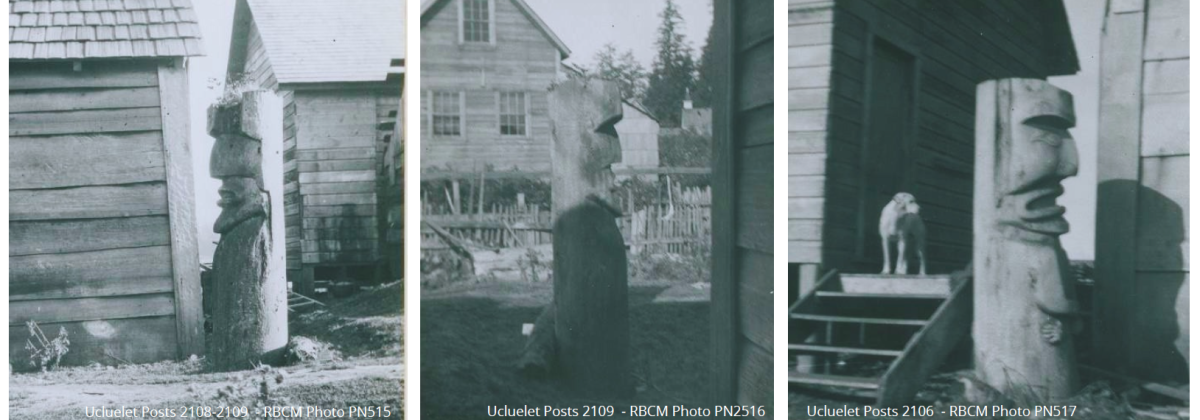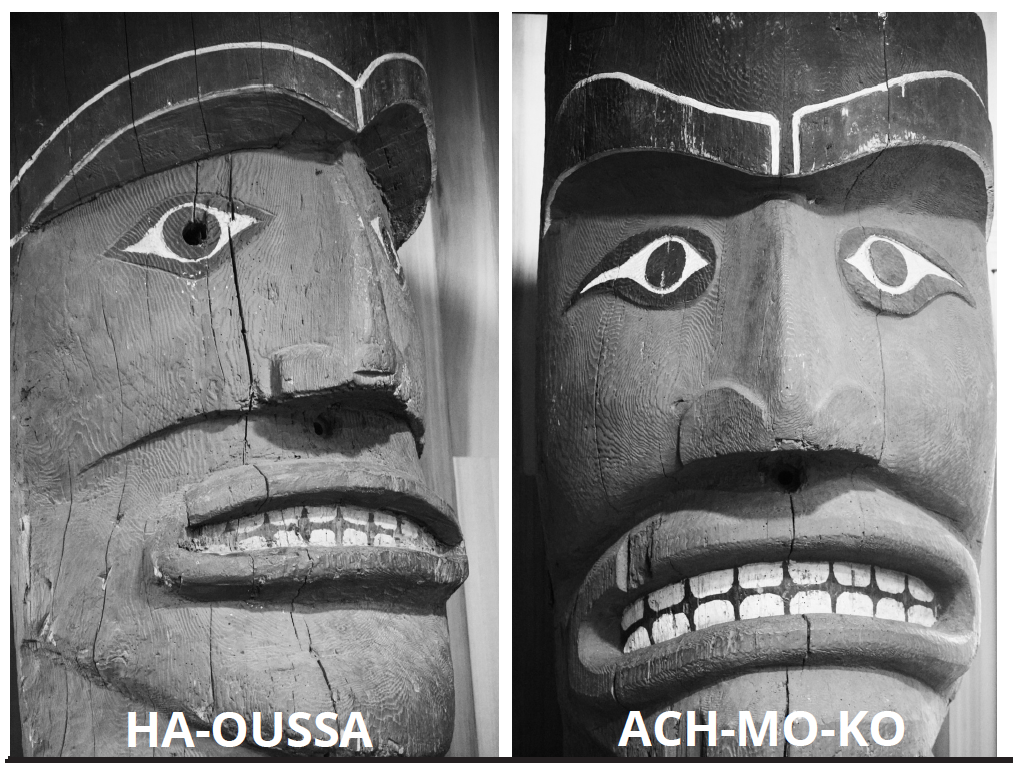
Modernization
Learn more about government’s intention to modernize the museum to protect our historic holdings and provide better access to our collections.

The top three images are from the archives of the Royal BC Museum in Victoria. The photos above show the returned house posts in their original location in hitac̓ u village in 1911, prior to being cut down and sold to Charles F. Newcombe under unknown circumstances.
In accordance to the Maa-nulth FInal Agreement and the Province of British Cumbia, Director of Culture and Heritage, Carey Cunneyworth and RBCM Conservator Michelle Washington from the Royal BC Museum (RBCM) have been working hard to secure the house post return to the community of hitac̓ u. This act of repatriation is a broader step towards reconciliation with the Canadian Government.
RBCM, documentation states; The four carved cedar house posts (RBCM catalogue numbers 2106, 2107,2108,2109), in which 2 of the 4 have been returned to Hitacu, were purchased by Charles F. Newcombe in October, 1912. His agent, Dr. Charles Maclean, sent the following information about the posts in a letter to Newcombe: read below, Ha-oussa and Ach-mo-ko. The return of the house posts are symbolic to the nation and mark a new chapter in the nations sovereignty. The RBCM catalogue states these house posts belonged to a family whose ancestral village was at "long beach"; a generalized location used by the museum at that time that encompassed both Kwisitis Village, and the area that is now called Wickaninnish Beach. These posts were likely purchased from two brothers who are identified as "Joe" and "Atsek/Adzick",and who stated that the house in which the poles were in stood for 30 years prior to being sold in 1912, which means that the poles themselves could be significantly older than that.
A house post ceremony was held in hitac̓ u at the mini bighouse to formally welcome the artifacts home. Brushing was offered by Rennie Touchie and Tim Sutherland and the floor was open to the community to share stories.
Jenny Touchie comments "(house post ceremony) was a great experience to see the house posts come back to the nation. It was truly amazing to see the dedication of the nation within the culture and heritage department, to bring these (posts), other artifacts, and items of significance back home where they belong and reconnecting to that piece of history."

A man's figure. This totem became a real person (alive) at times of potlatch. He was the chief of those living at Long Beach. He used to let the people play. RBCM Catalogue notes; Inside house post depicting Nootka Chief.
A man's figure. This man used to fight (a warrior) the battles of those other men (Ha- Oussa and Eich-a-tuppee) and against those bands who were their enemies. He apparently was the fighting man whilst the others spent their time in amusing the people, this soldier also became real at potlatch time.
Carey Cunneyworth
Director of Culture, Language & Heritage / Archaeologist
Yuułuʔiłʔatḥ Government - Ucluelet First Nation